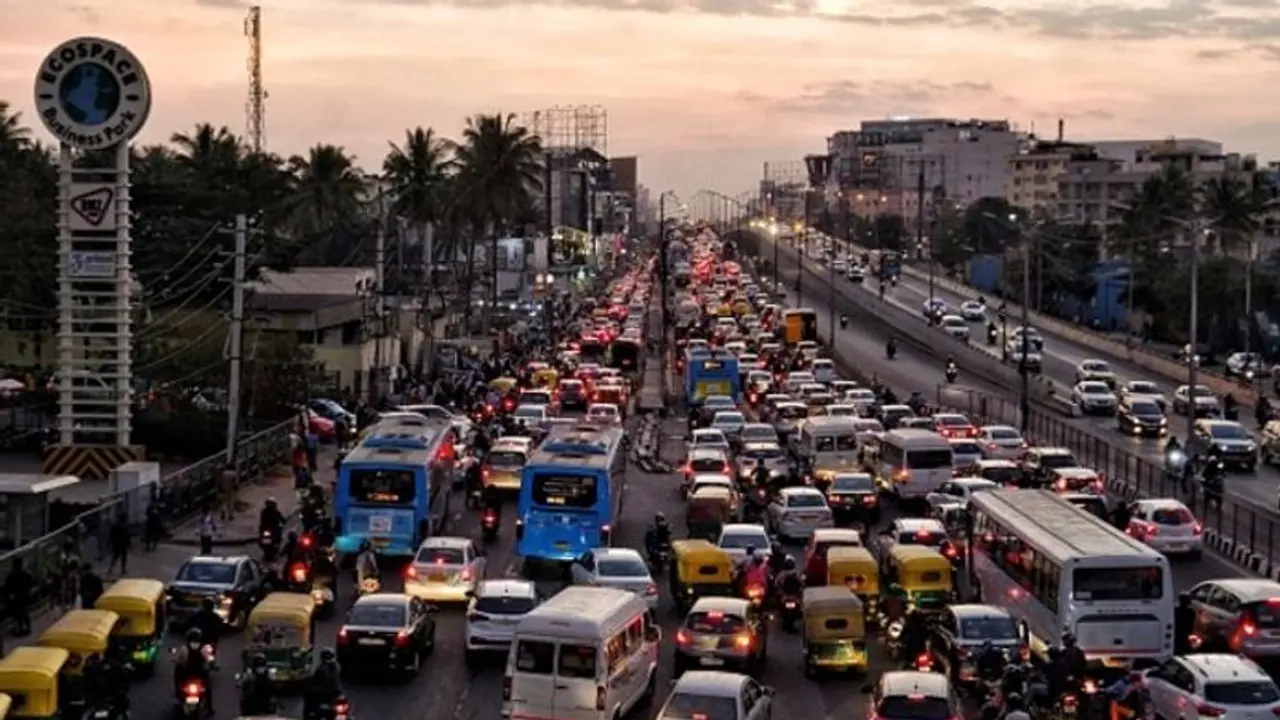The city experiences an annual loss of Rs 19,725 crore due to factors such as traffic delays, congestion, signal stoppages, and fuel wastage. Despite having 60 operational flyovers, the losses persist. The study underscores the need for improved traffic management and road planning
Bengaluru is grappling with an annual financial loss of Rs 19,725 crore due to a myriad of traffic-related issues such as delays, congestion, signal stoppages, time wastage, fuel consumption, and other related factors. The research, led by renowned traffic and mobility expert MN Sreehari and his team, has shed light on the significant economic toll of the city's traffic woes.

MN Sreehari, a prominent transportation advisor to multiple governments and smart city initiatives, presented the comprehensive report to Deputy Chief Minister DK Shivakumar. The report encompasses recommendations encompassing traffic management, road planning, and the development of flyovers, among other essential measures.
In an attempt to address the critical matter of traffic congestion in Bengaluru, Deputy Chief Minister Shivakumar met with Union Minister of Road Transport and Highways, Nitin Gadkari, in New Delhi on August 3. The central government has urged the state administration to formulate an intricate project report to alleviate the congestion that plagues the IT city.
The Problem
Despite boasting a robust network of 60 fully operational flyovers within the city, the study highlights that Bengaluru has incurred an astronomical loss of Rs 19,725 crore due to factors including delays, bottlenecks, signal interruptions, interactions between slow and fast-moving vehicles, fuel wastage, and the monetary conversion of lost time and vehicle usage.
The report attributes the explosive growth of the IT sector, which has precipitated the development of ancillary amenities such as housing and education, as a driving force behind the city's population surge to 14.5 million and vehicle count nearing 1.5 crore.
With the city's expansion from 88 to 985 square kilometres in 2023, the study proposes an extension to 1,100 square kilometres to match its burgeoning needs. The report underscores the critical mismatch between road length expansion, vehicular proliferation, and area growth. With a current road length of around 11,000 kilometres, the infrastructure is woefully inadequate to cater to the escalating transportation demand.
The Solution
Sreehari and his team emphasize the urgency of aligning the city's infrastructural development with its exponential population and job growth. The gaps in infrastructure have manifested in extensive delays, congestion, prolonged travel times, and substantial economic losses, both direct and indirect.
Sreehari emphasizes strategic road planning to accommodate Bengaluru's radial, outward, and circumferential expansion. The recommendation extends to augmenting road transport with metro rail, linear railway lines, and the integration of the existing Commuter Rail System (CRS) to bolster Bangalore's transportation network.
To alleviate traffic congestion, the research team advocates for the elimination of roadside parking, with roads exclusively for vehicles and sidewalks designated for pedestrians. Sreehari candidly acknowledges the challenges of achieving this transformation in a city where parking is prevalent.
The report outlines a comprehensive roadmap for Bengaluru's transportation needs over the next 25 years. It advocates for the bolstering of mass transit options like metro systems, monorails, and high-capacity buses while discouraging private transportation. Integration of artificial intelligence, robotics, and informatics, such as Variable Message Systems (VMS), is suggested to enhance road user experience.
Sreehari's vision encompasses the establishment of radial and ring roads, with specific rings including Outer Ring Road (ORR), Peripheral Ring Road (PRR), and Satellite Town Ring Road (STRR). The realization of this vision necessitates overcoming challenges related to land acquisition that have led to escalating construction and maintenance expenses for STRR.
